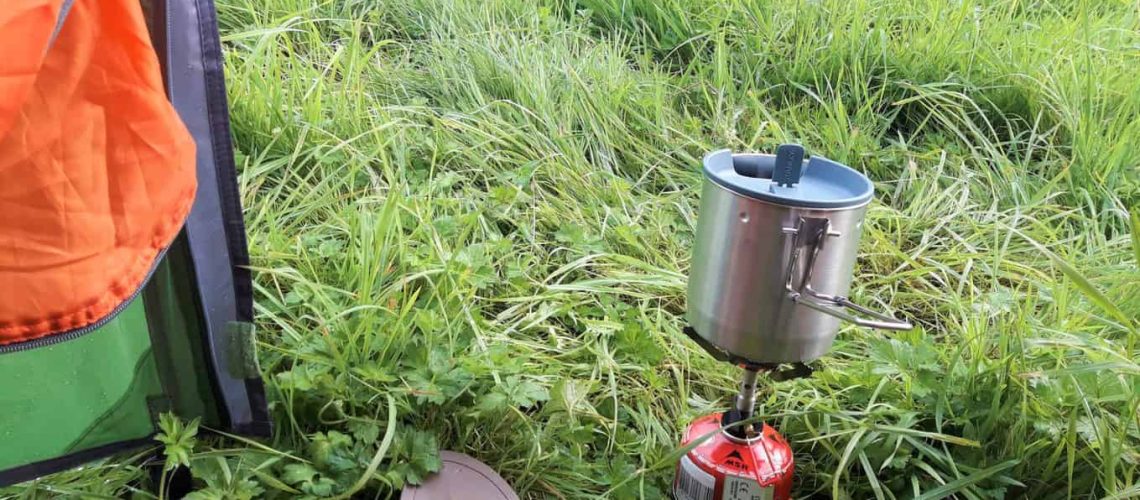Ever wondered how people decide what to bring with them when planning food for their backpacking trip? In this blog I discuss the types of foods available to bring with us when camping, and highlight the merits of each one.
In my previous blog I discussed how to calculate the number of calories you would expect your body to use per day during your backpacking trip. I also introduced you to a couple of useful tools to help you arrive at that figure.
If you didn’t do your personal calculation yet, you might want to do that before going through this blog. Just plug your details into the (free) calculators that are included in the blog How Much Food To Take Backpacking Per Day.
Now that you have a figure in your head of how many calories to bring, it’s time to break that down into real food and start to choose what type of food you want to bring with you to sustain you while you walk. Let’s food prep!
Disclaimer: Please note that this post may include affiliate links to products which may provide a commission to me at no extra cost to you. For more information, you can read my affiliate disclosure in my privacy policy. All opinions are my own, and I only recommend products I believe in.
What are your choices?
Fresh foods for backpacking?
I imagine it will be obvious to you that bringing the same food/raw ingredients that you eat at home will make your pack really heavy. All that water weight in fresh foods adds up. It also takes up valuable space in your pack. Hmmm, not ideal.
However, adding some fresh food components into our diet as and when they are available to us can increase vitamins and minerals. This could lead to faster recovery from intense exercise.
Dehydrated foods
An alternative is to bring dehydrated foods that you can rehydrate when you are in camp. Taking the water out of the food makes it extremely convenient for us as hikers. An entire pasta dinner by Adventure Food, for example, weighs around 150g for a 600 calorie ready meal.
Food weight example
As a 63 kg, 170 cm high female, walking 15 miles a day on reasonably flat terrain, my daily requirement figure would be roughly 3622 calories. So to give you an idea of how much my daily food would weigh if I took 100% dehydrated food, it would roughly equate to 905.5 grams per day of dehydrated food.
Concentrated foods
Another option we have is to use concentrated foods. These are foods that naturally contain little water, and a high percentage of fat or sugar. They bring a high-calorie count for the weight. For example, nuts, dried fruits, cereal bars, peanut butter, oils.
Combinations
A combination of these three options can help us feel satisfied and content with our food choices when on the trail.
Personally, what I like to do is bring the bulk of my main meals as dehydrated packs. Depending on the preparation time I have available they will be either homemade or bought. Then I take some concentrated foods as snacks and supplement my diet with a few fresh foods along the way. Fruits and salad are favourites that I buy locally as I move along the trail.
You will need to take into consideration the area that you are hiking in, what will be available to you shopwise, and how your body reacts to different foods when you hike consistently. You may need to experiment with some shorter trips to get this information, and learn more about yourself through trial and error.
How to choose the best backpacking food
Remember the calorie meal breakdown from the previous blog? Not to worry if you don’t, here it is again. It has an extra column added to give us the calories to aim for (you will need to adjust this figure based on your own needs):
| Meal | % of Total Calories | Calories using lowest % (based on 3622/day) |
|---|---|---|
| Breakfast | 25-30% | 900 |
| Lunch | 20-25% | 720 |
| Dinner | 30-35% | 1200 |
| Snacks | 10-25% | 300-900 |
| TOTALS | 100% | 3120-3720 |
It may look like a challenge to you to meet those calorie demands daily. However, if you are planning on being out for only a short hike of 3 or 4 days and don’t mind breaking into your body fat reserves, you can get away with undereating a little.
Undereating on your backpacking trip
One thing to bear in mind is that there may be consequences to undereating for a length of time.
Yes, you can lose weight, which could be desirable to you if you are carrying a couple of extra kilos around. But also, your body may find it harder to find the energy it needs to repair itself, and you may be more at risk of injury because of this. It’s for you to weigh up your options and listen to your body while on the trail to see how it responds so you can do things better the next time.
I found, for example, that if I don’t eat some kind of fresh food every day, then I start to feel sluggish, lacking in energy and get a nasty taste in my mouth. A way for me to combat this is to bring something like carrot sticks in a bag with me – they last for a good couple of days if you wrap them well, and satisfy my craving for fresh food.
Next, I will be exploring some exact options for each meal, with easy recipes included to make sure we hit our targets.
